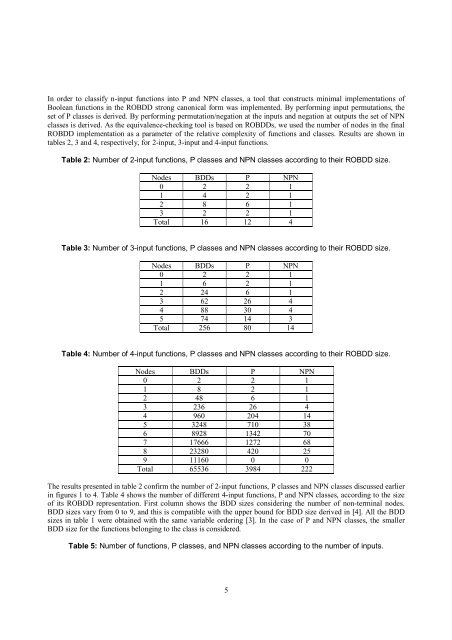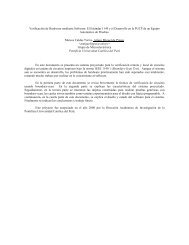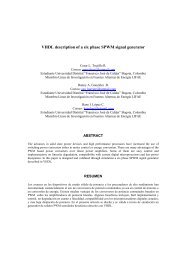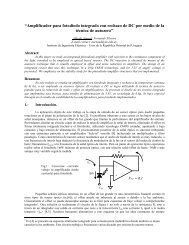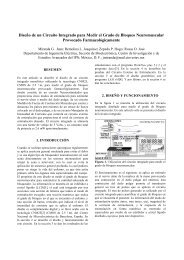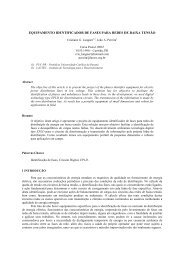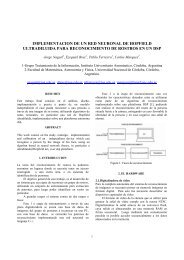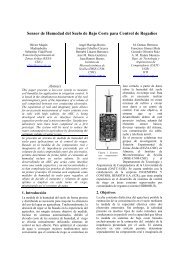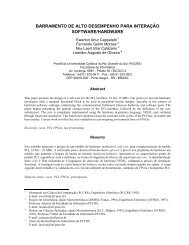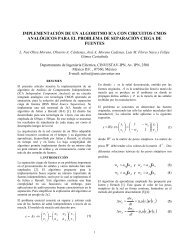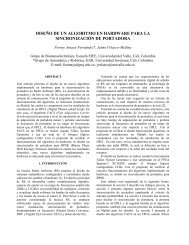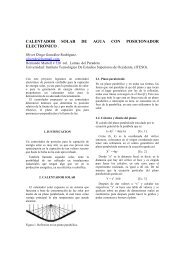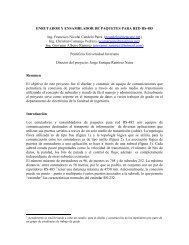Classifying n-Input Boolean Functions
Classifying n-Input Boolean Functions
Classifying n-Input Boolean Functions
You also want an ePaper? Increase the reach of your titles
YUMPU automatically turns print PDFs into web optimized ePapers that Google loves.
In order to classify n-input functions into P and NPN classes, a tool that constructs minimal implementations of<br />
<strong>Boolean</strong> functions in the ROBDD strong canonical form was implemented. By performing input permutations, the<br />
set of P classes is derived. By performing permutation/negation at the inputs and negation at outputs the set of NPN<br />
classes is derived. As the equivalence-checking tool is based on ROBDDs, we used the number of nodes in the final<br />
ROBDD implementation as a parameter of the relative complexity of functions and classes. Results are shown in<br />
tables 2, 3 and 4, respectively, for 2-input, 3-input and 4-input functions.<br />
Table 2: Number of 2-input functions, P classes and NPN classes according to their ROBDD size.<br />
Nodes BDDs P NPN<br />
0 2 2 1<br />
1 4 2 1<br />
2 8 6 1<br />
3 2 2 1<br />
Total 16 12 4<br />
Table 3: Number of 3-input functions, P classes and NPN classes according to their ROBDD size.<br />
Nodes BDDs P NPN<br />
0 2 2 1<br />
1 6 2 1<br />
2 24 6 1<br />
3 62 26 4<br />
4 88 30 4<br />
5 74 14 3<br />
Total 256 80 14<br />
Table 4: Number of 4-input functions, P classes and NPN classes according to their ROBDD size.<br />
Nodes BDDs P NPN<br />
0 2 2 1<br />
1 8 2 1<br />
2 48 6 1<br />
3 236 26 4<br />
4 960 204 14<br />
5 3248 710 38<br />
6 8928 1342 70<br />
7 17666 1272 68<br />
8 23280 420 25<br />
9 11160 0 0<br />
Total 65536 3984 222<br />
The results presented in table 2 confirm the number of 2-input functions, P classes and NPN classes discussed earlier<br />
in figures 1 to 4. Table 4 shows the number of different 4-input functions, P and NPN classes, according to the size<br />
of its ROBDD representation. First column shows the BDD sizes considering the number of non-terminal nodes.<br />
BDD sizes vary from 0 to 9, and this is compatible with the upper bound for BDD size derived in [4]. All the BDD<br />
sizes in table 1 were obtained with the same variable ordering [3]. In the case of P and NPN classes, the smaller<br />
BDD size for the functions belonging to the class is considered.<br />
Table 5: Number of functions, P classes, and NPN classes according to the number of inputs.<br />
5


